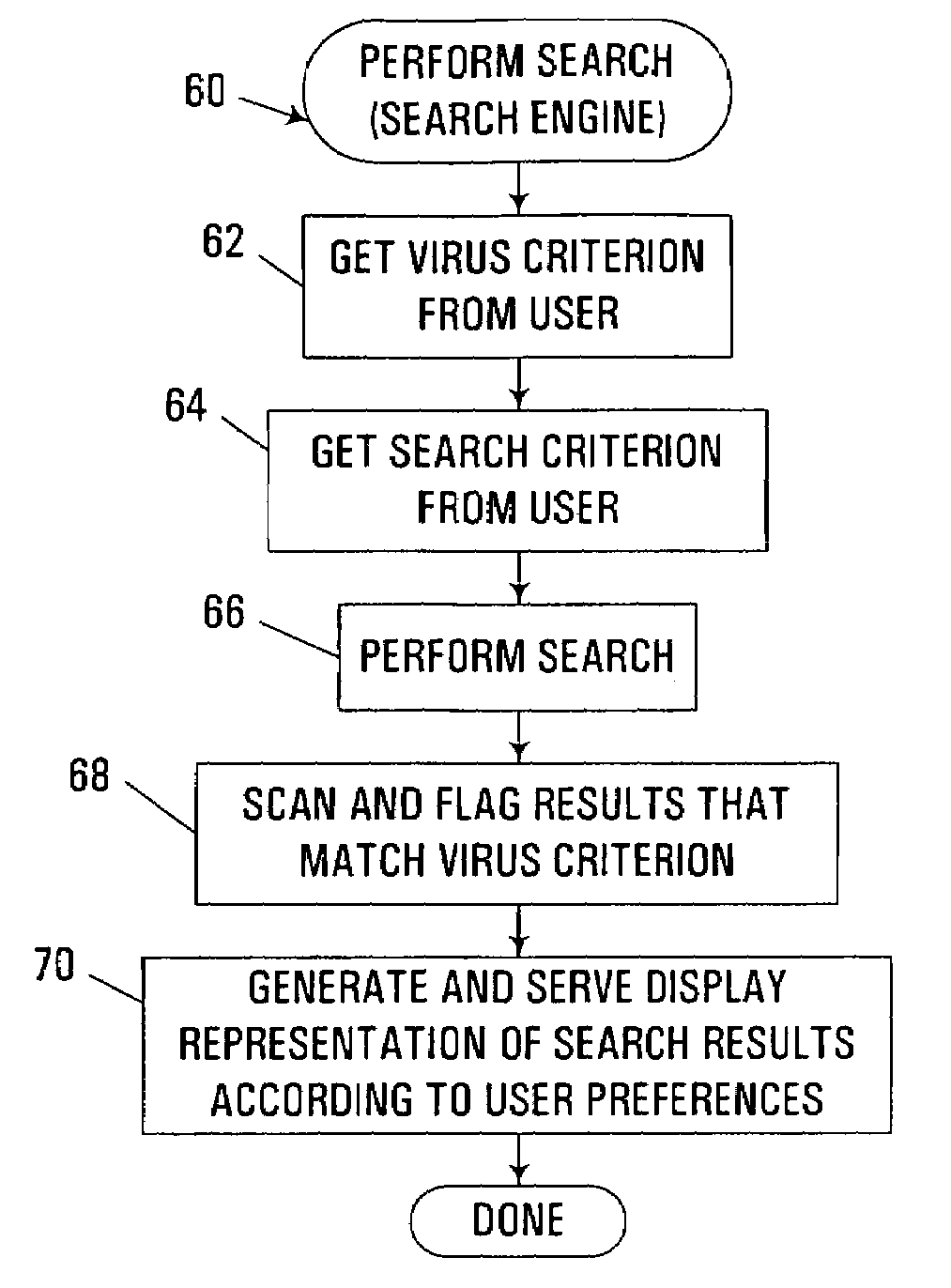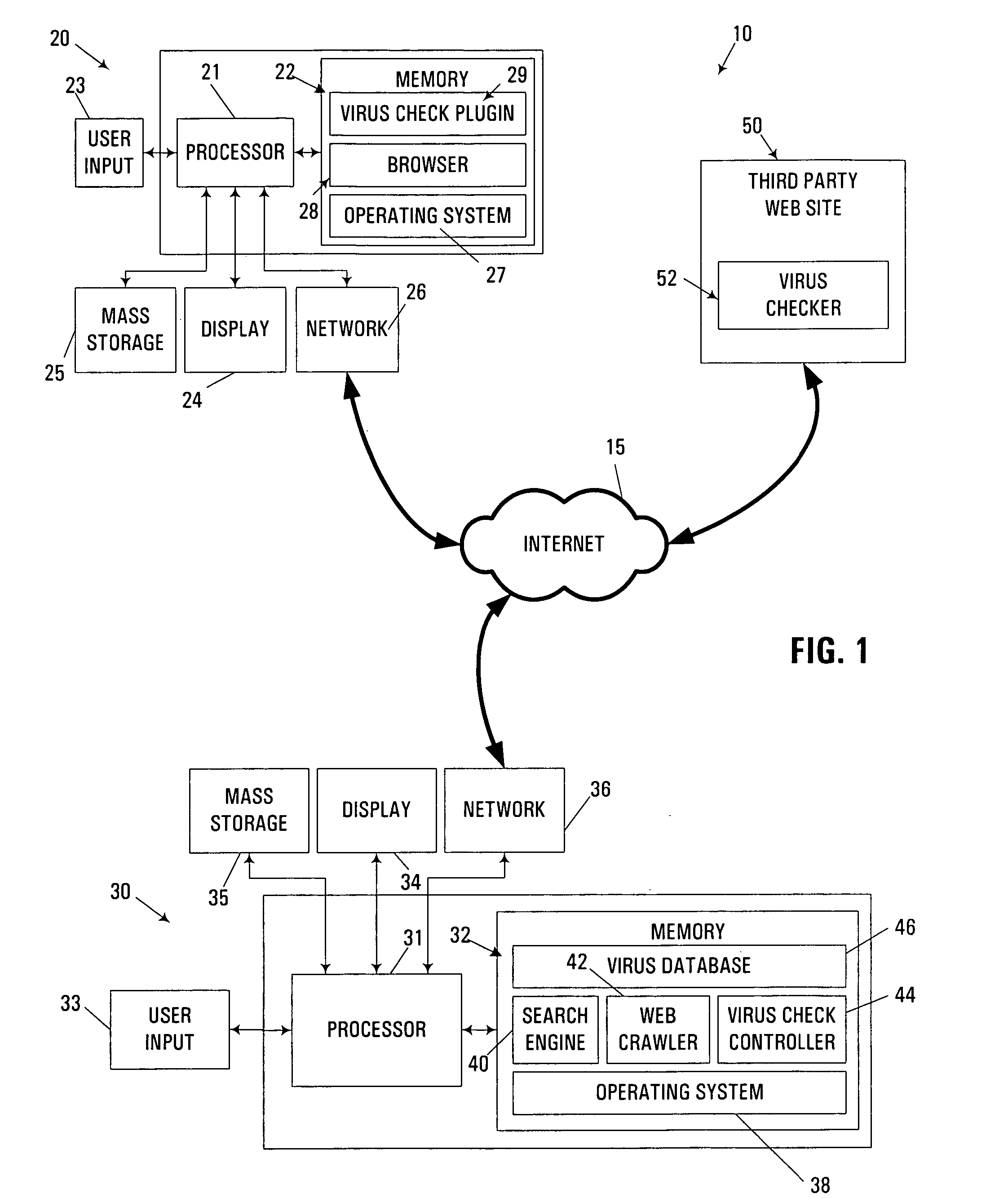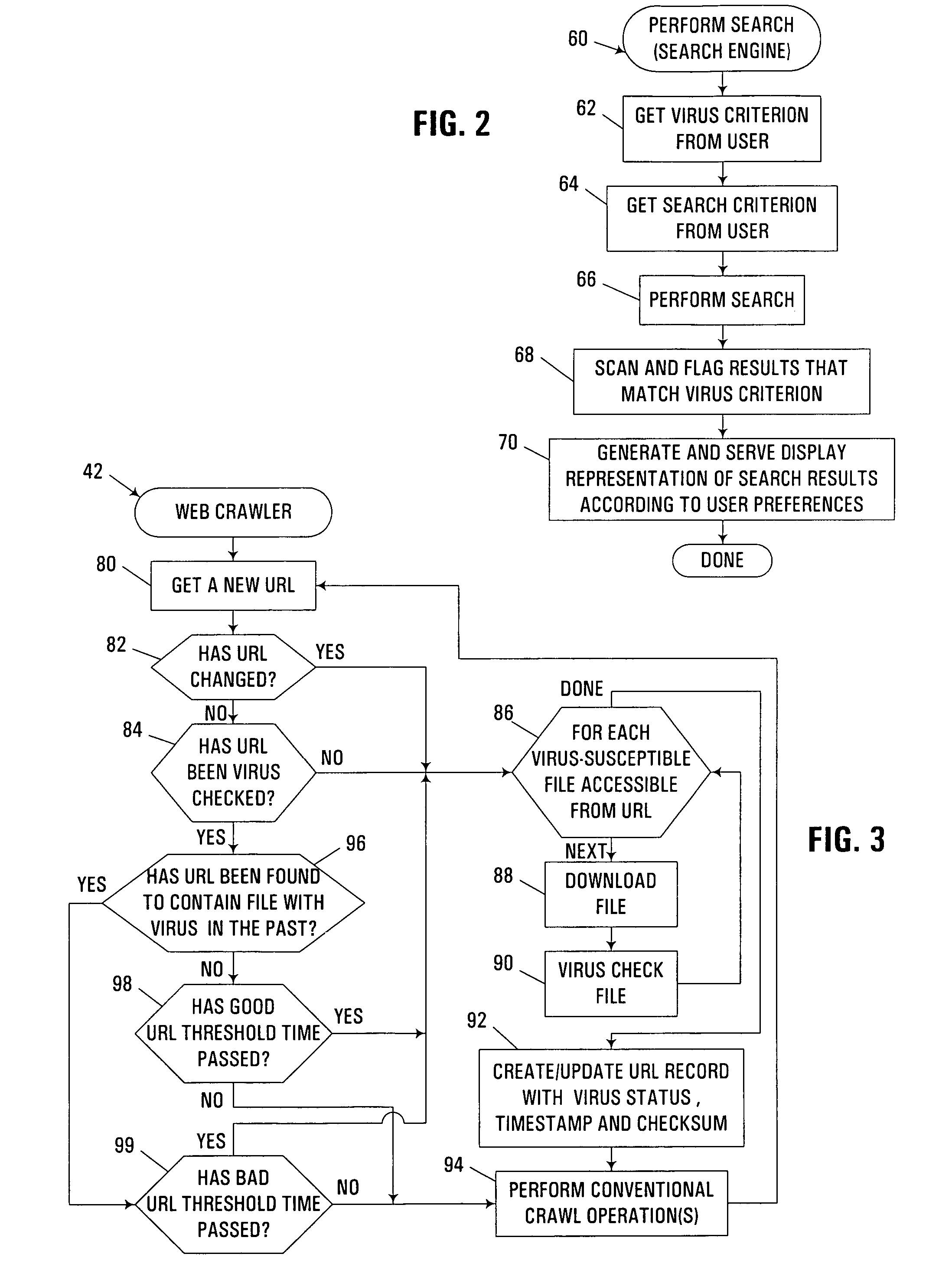Virus checking and reporting for computer database search results
- Summary
- Abstract
- Description
- Claims
- Application Information
AI Technical Summary
Benefits of technology
Problems solved by technology
Method used
Image
Examples
Embodiment Construction
[0027]Turning to the Drawings, wherein like numbers denote like parts throughout the several views, FIG. 1 illustrates a computer system 10 consistent with the invention. Computer system 10 is illustrated as a networked computer system including a plurality of computers or apparatuses 20, 30, 50 interfaced with one another over a network 15. Network 15 may represent practically any type of networked interconnection, including but not limited to local-area, wide-area, wireless, public networks (e.g., the Internet), and combinations thereof. Moreover, it will be appreciated that a wide variety of additional computers and other electronic devices may be networked through network 15.
[0028]In the illustrated implementation, computer system 10 is principally utilized in the generation and output of computer database search results to a user, in particular for locating and accessing web pages or web sites accessible via the Internet and / or one or more private networks using unique Uniform ...
PUM
 Login to View More
Login to View More Abstract
Description
Claims
Application Information
 Login to View More
Login to View More - R&D
- Intellectual Property
- Life Sciences
- Materials
- Tech Scout
- Unparalleled Data Quality
- Higher Quality Content
- 60% Fewer Hallucinations
Browse by: Latest US Patents, China's latest patents, Technical Efficacy Thesaurus, Application Domain, Technology Topic, Popular Technical Reports.
© 2025 PatSnap. All rights reserved.Legal|Privacy policy|Modern Slavery Act Transparency Statement|Sitemap|About US| Contact US: help@patsnap.com



